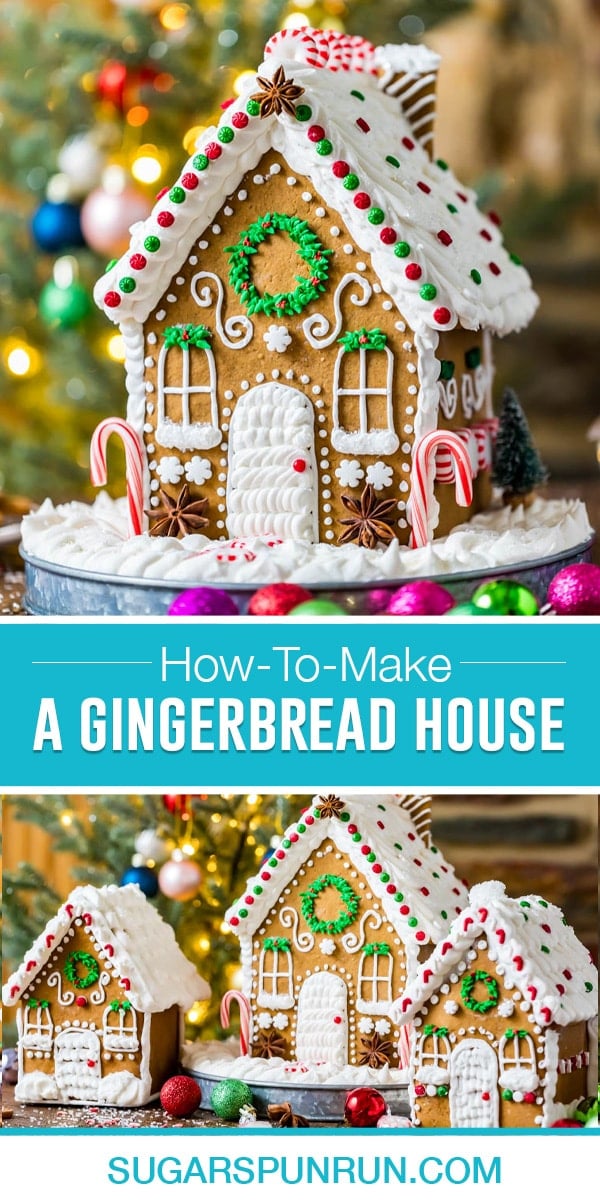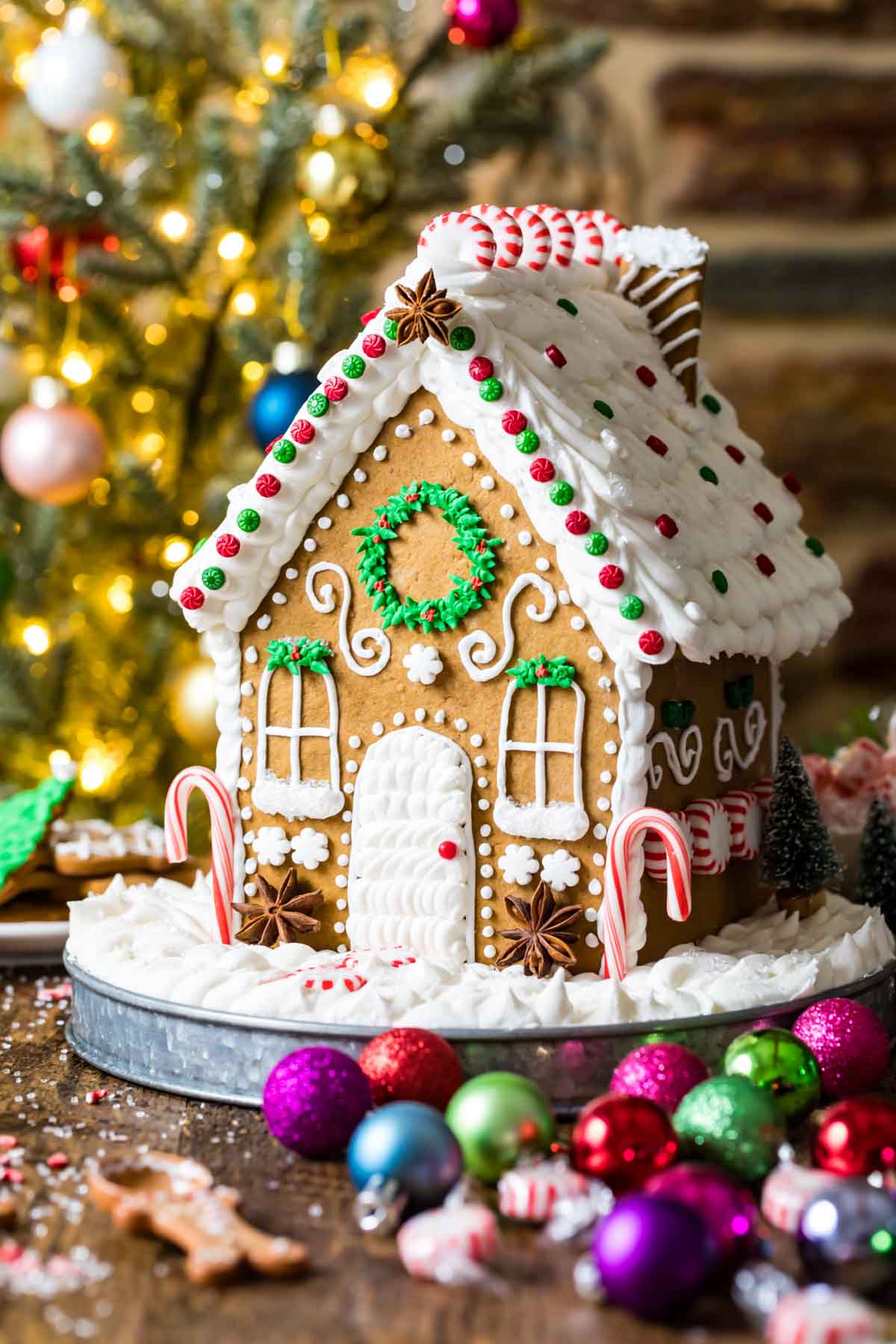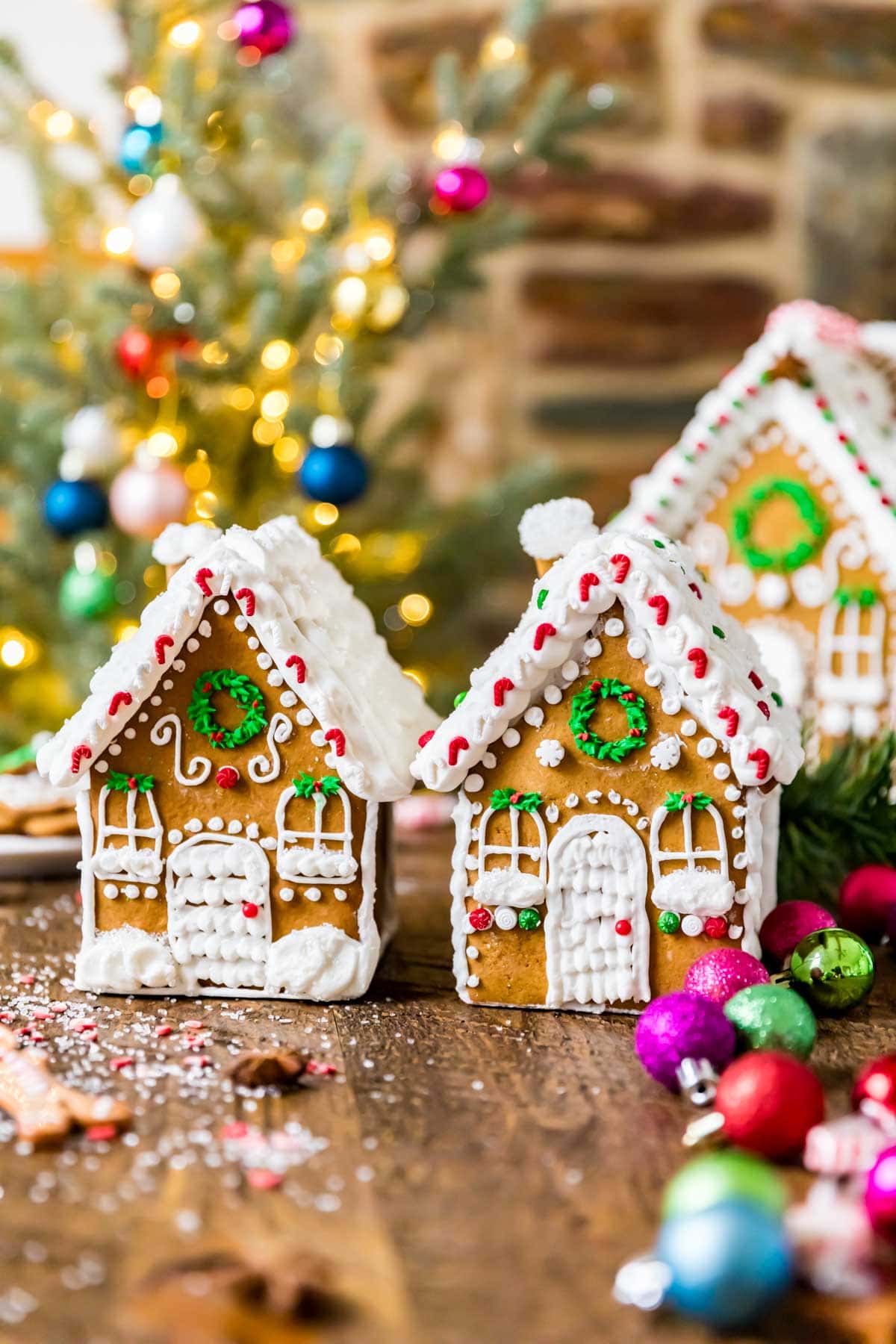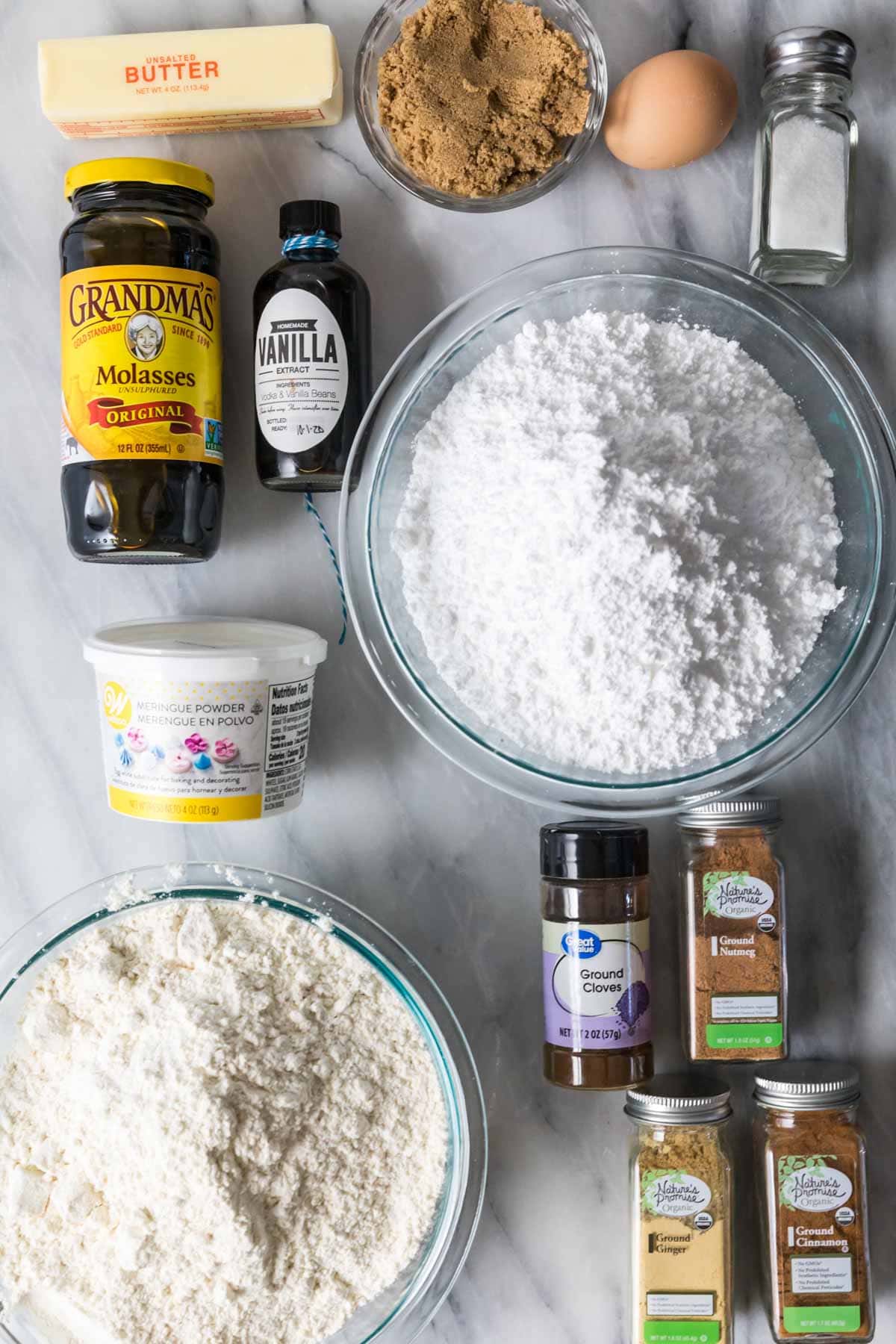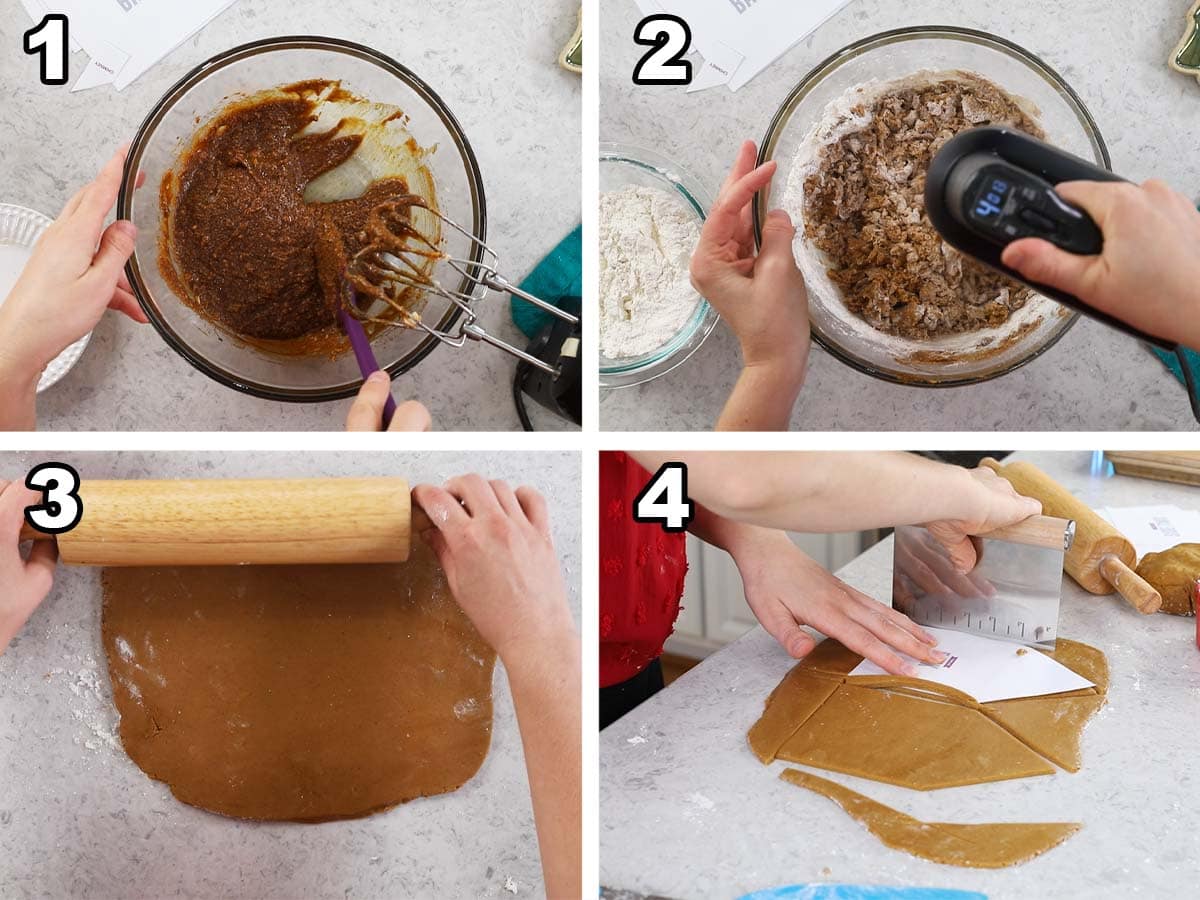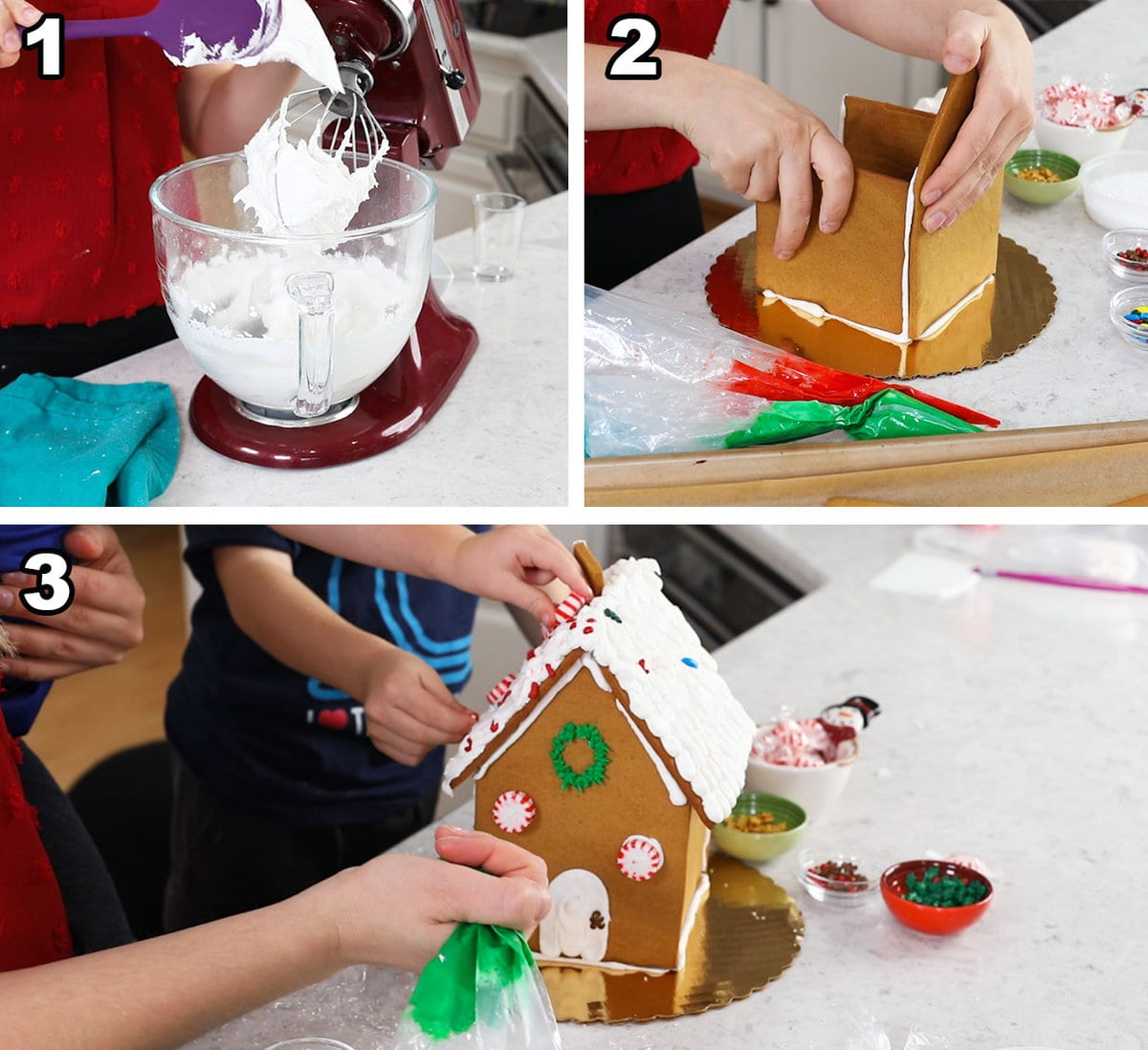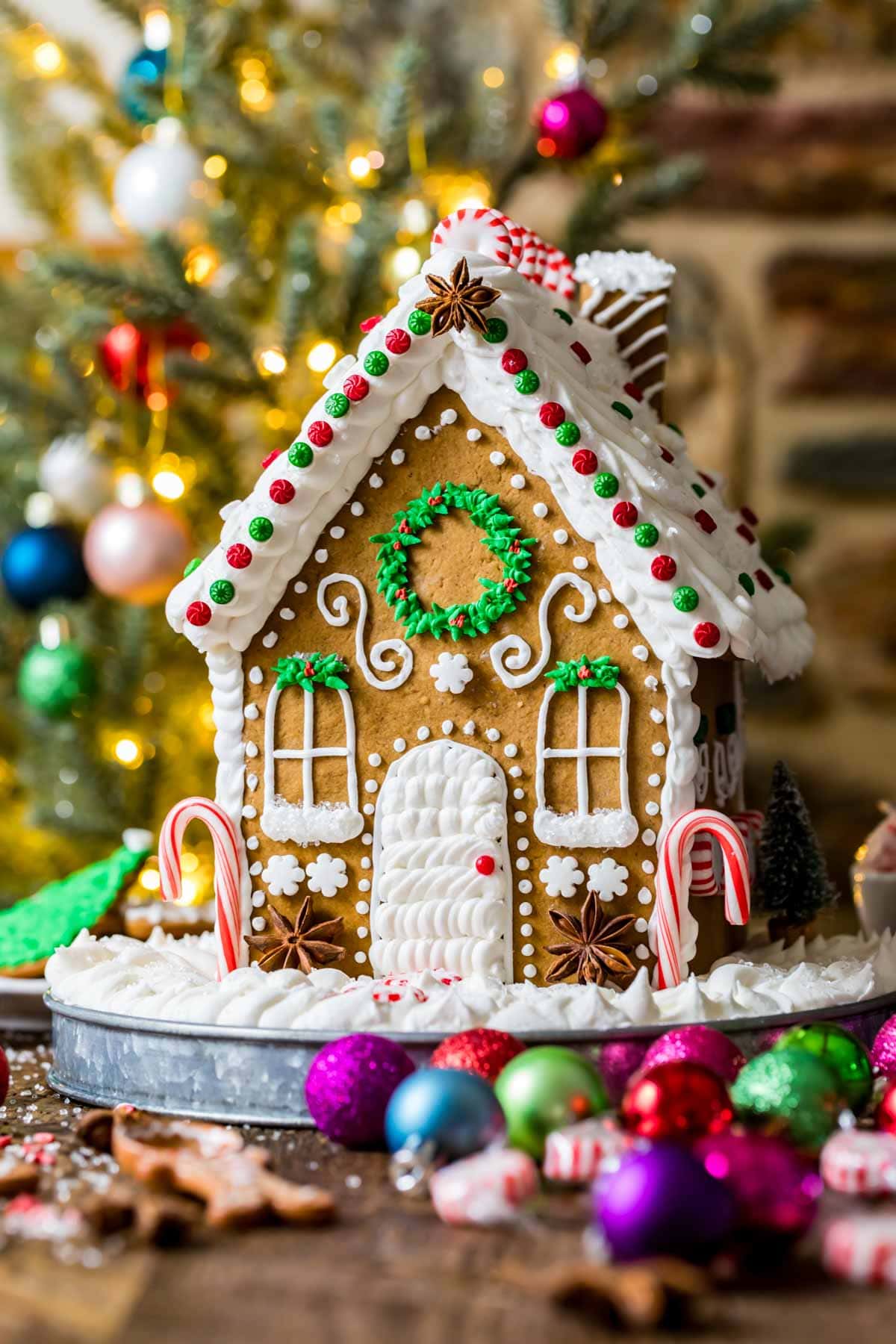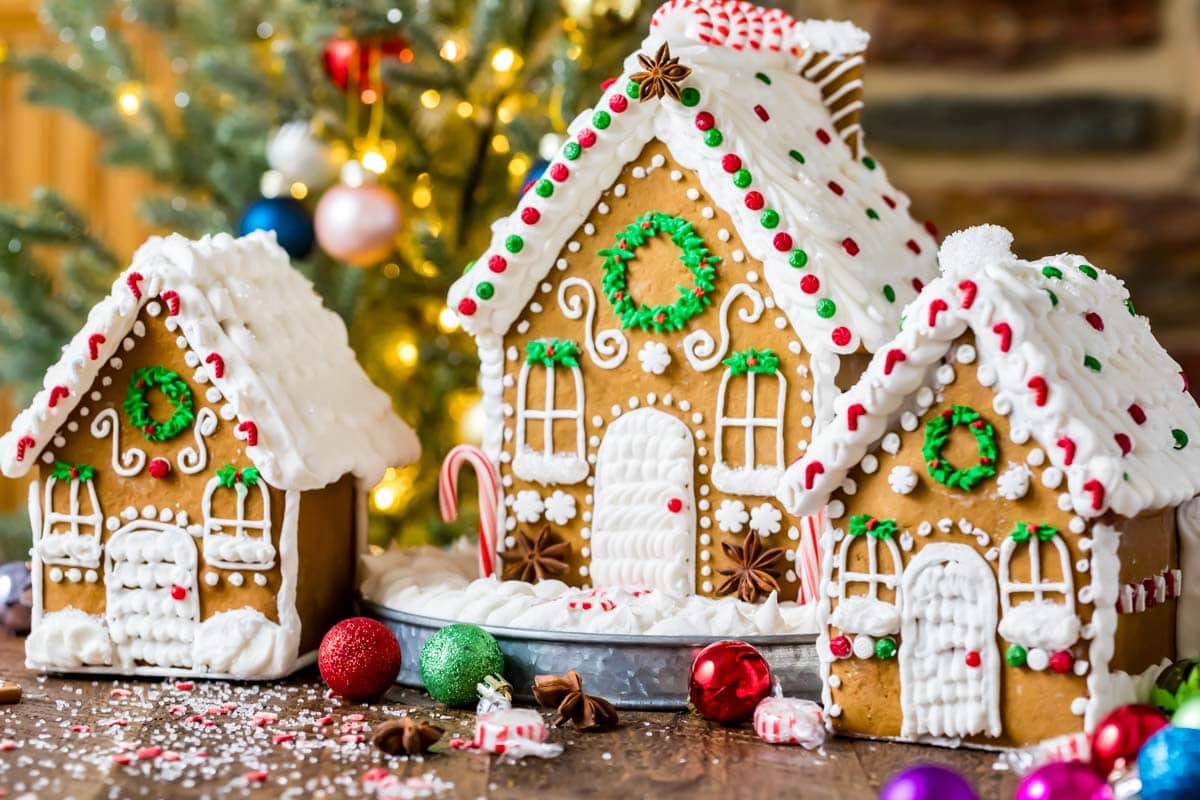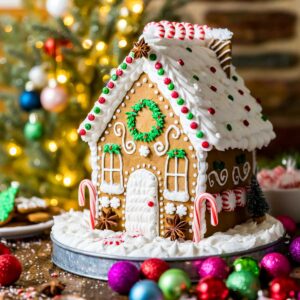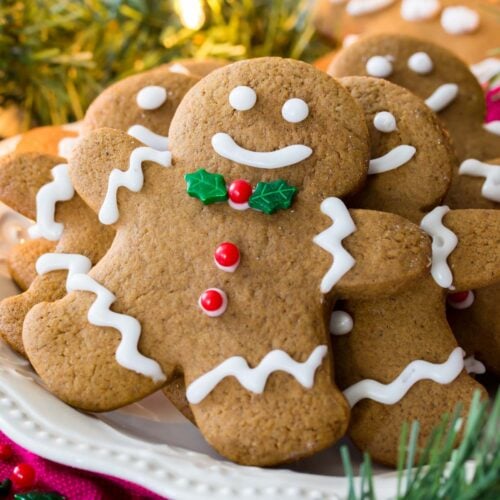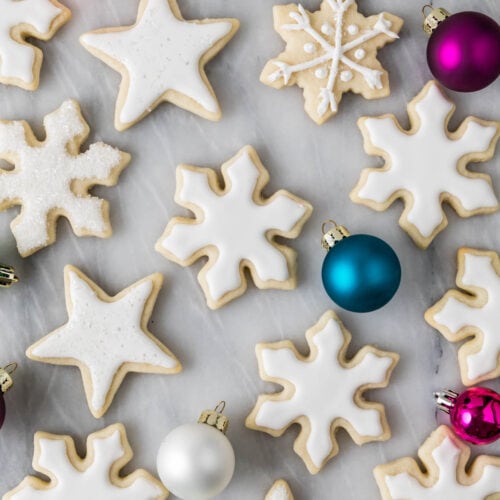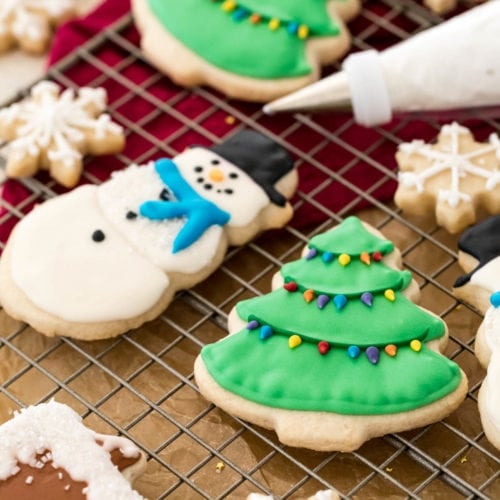Why You Should Try This Gingerbread House This Season:
Better than using a gingerbread cookie recipe. I have a great gingerbread cookie recipe, but that one, and most others out there, are not suitable for making a house as they’re designed to be soft and melt-in-your-mouth, making them not sturdy enough to hold up a house. This recipe is specifically engineered for building houses. Makes a solid, sturdy house. I carefully engineered this recipe to make a strong house. Once you assemble this, it’ll hold for, essentially, forever. I’m planning on using the one I made and photographed above as a Christmas decoration until the New Year (Zach is not happy about this 😂). The icing works about as well as cement. It is strong! Instead of a classic sugar cookie icing, we’re making my royal icing (which is equally great for decorating gingerbread houses and sugar cookies). It dries solid, you won’t have to worry about your house falling apart, and it’s totally edible (and quite tasty). Totally edible (and YOU control the ingredients). Every bit of this house is completely edible, and it tastes quite good (better than a kit from the store (and with fewer preservatives)!). My kids quickly devoured the houses they decorated.
I’m including templates (in the recipe card) to make either 1 larger gingerbread house (which I demonstrate in the video) or two smaller houses (shown above). This recipe will make enough to do either one of these. Also, all parts of this recipe can be prepped in advance, so it’s great for having a gingerbread house decorating party! Let’s get started!
What You Need
Here are the ingredients you need to make the gingerbread house(s) and the icing. Don’t forget candies and sprinkles for decorating too!
For the house
Molasses. Molasses is a key ingredient in any gingerbread recipe. Stick with an unsulphured molasses like Grandma’s or Brer Rabbit brand. Do not use blackstrap molasses here! Butter. While vegetable shortening could be substituted, I wanted this recipe to be suitable for eating and butter is simply the better choice for that. If you only have salted butter on hand, reduce the salt that you add to ¼ teaspoon. Sugar. Light or dark brown sugar would be the best choice here. Use whichever you have on hand. Light brown sugar will yield a lighter-colored gingerbread house, while dark will give you a darker one with a richer flavor. You can’t go wrong either way, really. Flour. All-purpose flour is recommended. We use a lot of flour and it’s important that you add it gradually as the dough will become quite stiff. The dough should not be sticky when you go to roll it out (and it shouldn’t be if the directions are followed) but if for any reason yours is sticky/unmanageable, you can try adding a bit more flour. Spices. Including nutmeg, clove, cinnamon, and ginger. These are warm and cozy spices that are perfect for winter baking!
For the Icing
Meringue powder. This stabilizes our royal icing (without using egg whites), making it sturdy and firm. Do NOT skip it, or you will have a mess on your hands. Vanilla extract. I use regular vanilla extract in my icing, but if you want yours to be pure white, use clear vanilla instead. You can use either type in the gingerbread dough (or leave it out entirely if you don’t plan on eating your gingerbread house! Vanilla is expensive, no sense using it you aren’t going to be eating it). Food coloring. If you plan to color your icing (optional), consider using gel food coloring. It’s much more potent than liquid food coloring, which means you won’t need nearly as much.
SAM’S TIP: You might end up with a little excess dough if you roll your pieces thinner than I did. If so, use some Christmas cookie cutters to cut out some shapes for decorating the house (gingerbread men, trees, stars, etc.). This is just an overview of the ingredients I used and why. For the full recipe please scroll down to the bottom of the post!
How to Make a Gingerbread House
Make the Dough
Bake
SAM’S TIP: The fewer cuts/re-rolls of the dough you do, the better. The dough needs to be smooth and cohesive, otherwise air pockets can work in and form bubbles in your pieces after baking. Bubbles are most likely to happen when regrouping the dough and rerolling it out, but if you do a good job forming the scraps back together, it’s less likely to happen.
Icing/Assembly
SAM’S TIP: I like to use a cake platter as the base for my house/houses. This allows me to use icing to cement the pieces down so they are even more stable. A plate or even a piece of cardboard would also work! I can’t wait to see how your gingerbread houses look! Enjoy! Let’s bake together! Subscribe to my newsletter to be notified of all the newest recipes, and find my free recipe tutorials on YouTube 💜
Related Recipes
